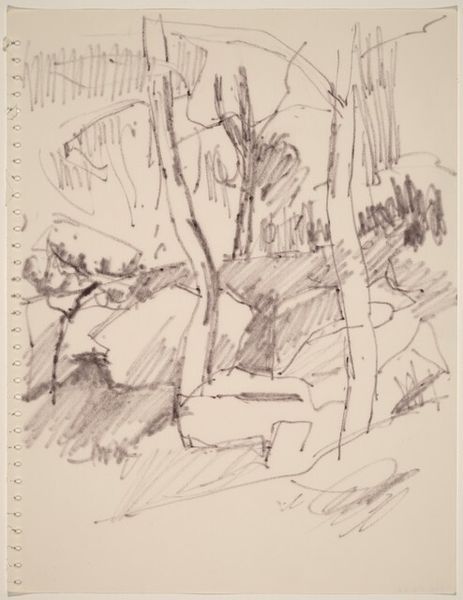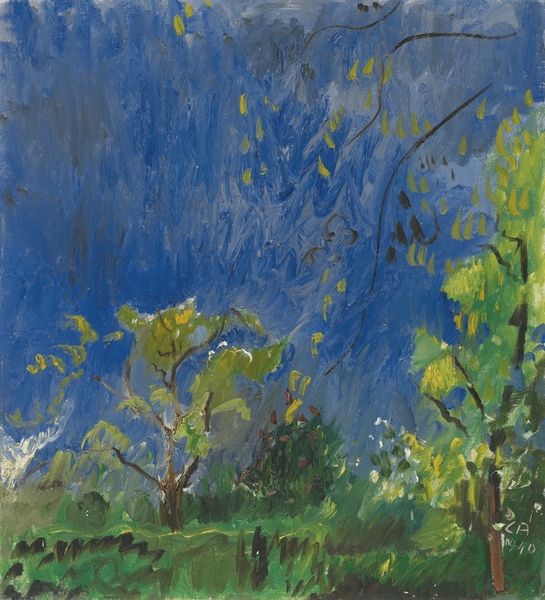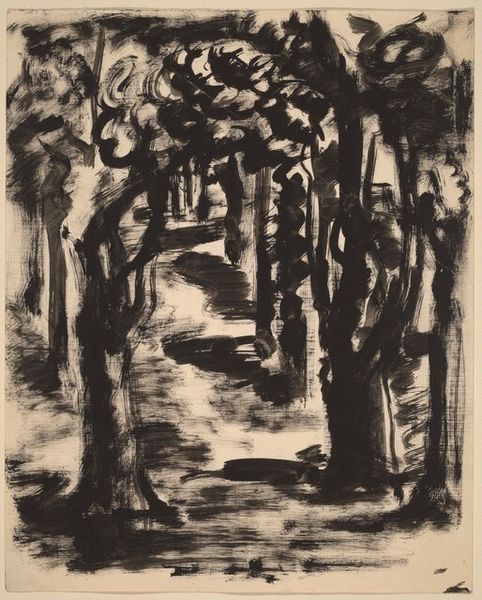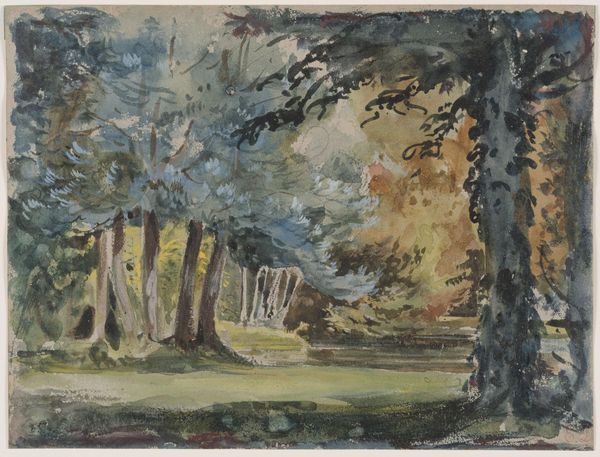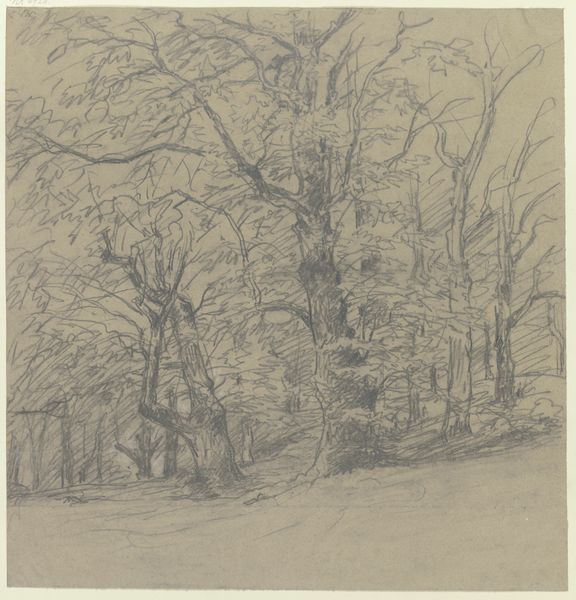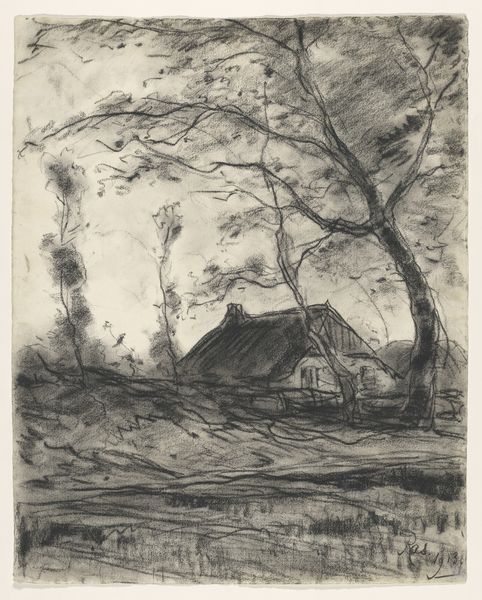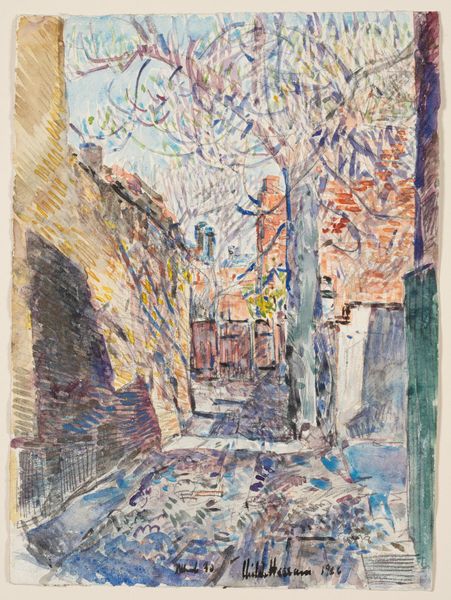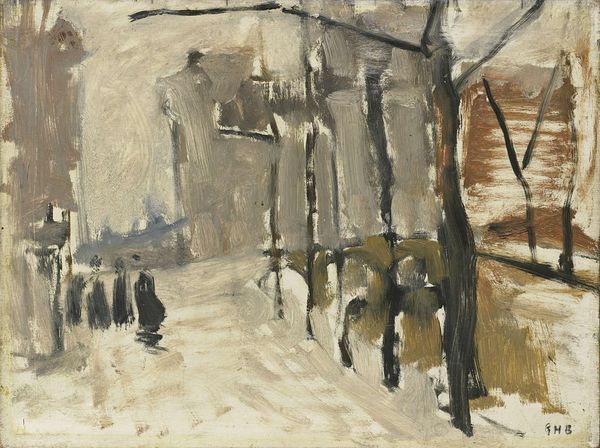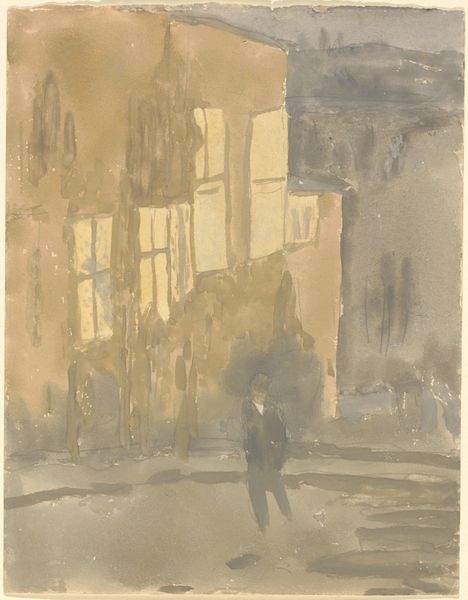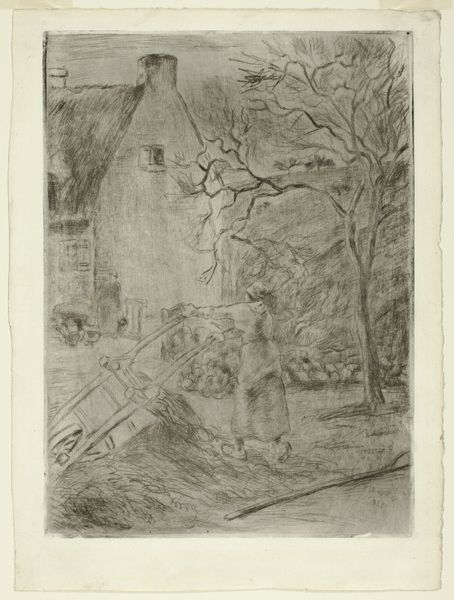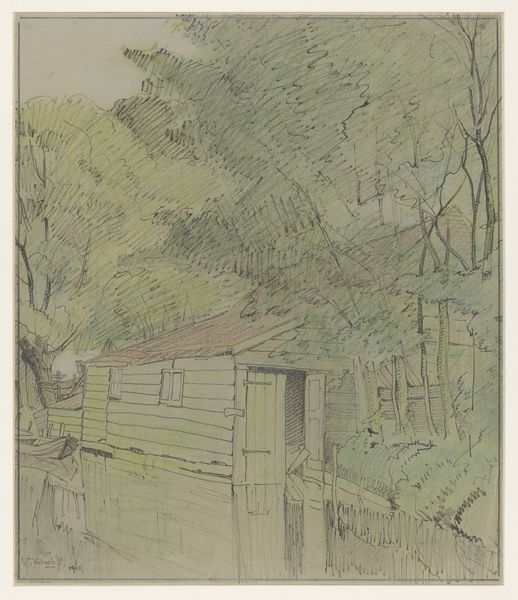
drawing, painting, paper, watercolor, architecture
#
drawing
#
painting
#
landscape
#
paper
#
watercolor
#
watercolor
#
architecture
Copyright: Städel Museum, Frankfurt am Main
Editor: This watercolor and drawing on paper is called "Garden at the Liebighaus," attributed to Jakob Nussbaum. It feels…unresolved, almost ghostly with those washes of colour and stark black lines. What strikes you about it? Curator: Immediately, I'm drawn to the application of the watercolor itself. Notice how Nussbaum doesn't try to hide the inherent qualities of the medium; the bleeds, the pooling of pigment, it's all laid bare. What social context might explain this, or speak to it in interesting ways? Editor: I'm not sure I understand. Is it really about the watercolors, rather than the scene being portrayed? Curator: It's about understanding the labor, the 'making' of art itself. Dismissing the notion of a perfectly rendered scene, but rather displaying the inherent qualities and 'flaws' of its materiality. In a sense, he is revealing, not concealing the work and his labor. Editor: So the conscious use of these materials challenges traditional boundaries... Curator: Precisely. Think about the period – what was the prevailing expectation for landscape painting? And how does Nussbaum’s process subvert that? Is it more democratic in any sense? By stripping away layers and expectation, perhaps we arrive at what we may call a modern depiction. Editor: That's really fascinating. I hadn't considered how the material handling could be such a key part of the artwork’s message and intent. It makes you look at watercolors in a new light, doesn't it? Curator: It does indeed. It’s in this attention to process that a real shift in perspective takes place, isn't it?
Comments
No comments
Be the first to comment and join the conversation on the ultimate creative platform.
